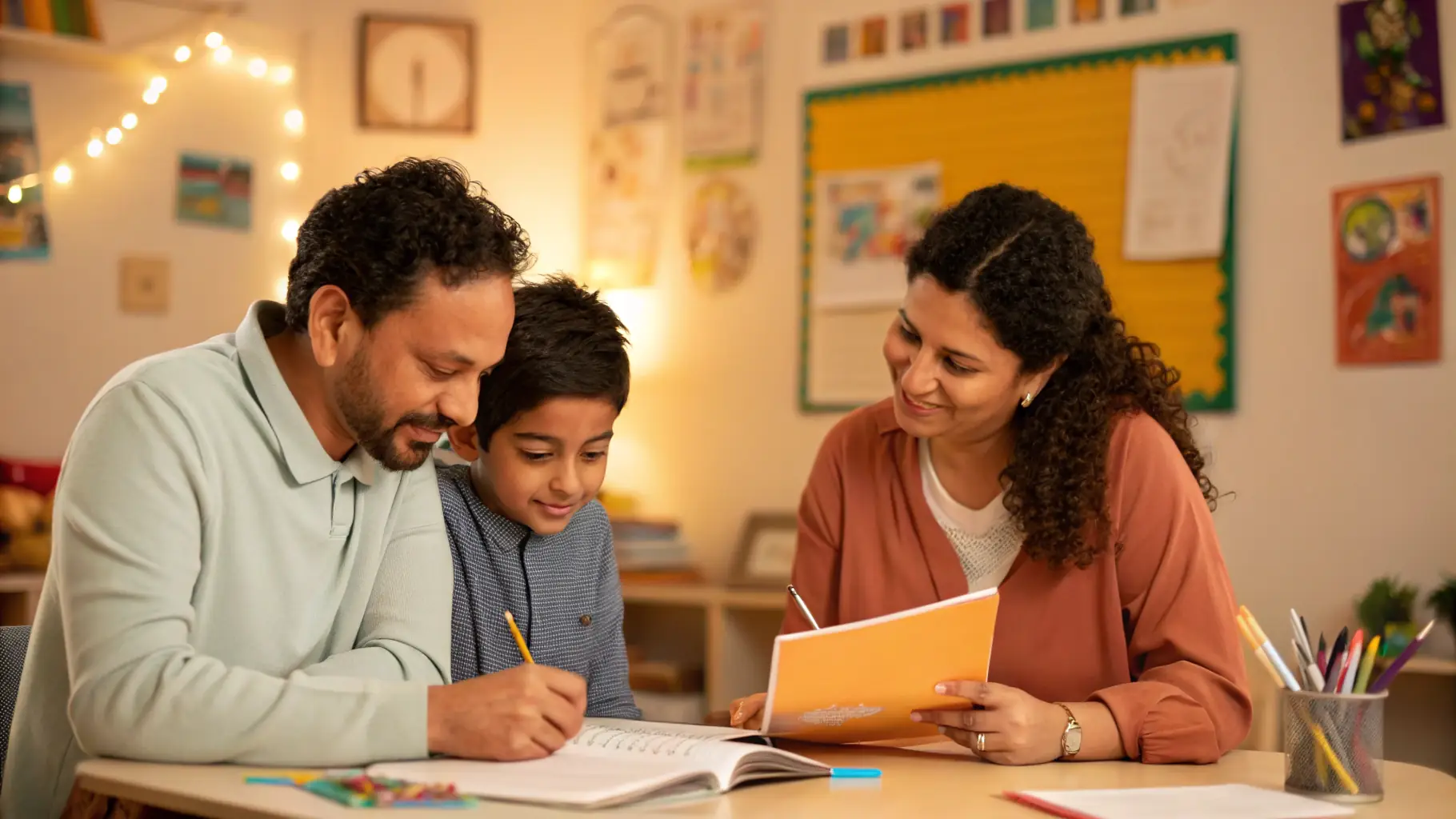Creating a culture of inclusion in middle schools is essential for fostering an environment where all students feel valued and supported. This culture begins with a shared vision among educators, administrators, and families, emphasizing the importance of diversity and acceptance.
Designation
Students who struggle in their classes at a middle-school level are supported by the classroom teacher, who will use Universal Design for Learning and differentiation principles to help adapt material and teaching styles for the student. If these strategies do not allow the student to be successful, classroom teachers or families will refer the student for a School-Based Team Meeting (SBTM).
The Classroom Teacher brings work samples and their concerns about the student to the SBTM. The Resource Teacher conducts a file review, where they look through past report cards and resource records to identify past performance, past attendance patterns, and past challenges and strengths, and any prior testing or concerns. The student’s teachers are all notified of the SBTM, and the parents or guardians are invited. The parents/guardians, Resource Teacher(s), Classroom Teacher(s), Counsellor(s), and Principals of the student attend the SBTM. At the SBTM, the student’s challenges are discussed and a plan to support the student across the school is developed.
After a designated amount of time, perhaps one to three months, the School-Based Team comes back together to see how the student has responded to the supports. If there are still significant concerns, the student is referred for school-based testing done by the Resource Teachers. The testing should take a month or two to complete, depending on the student and the Resource Teacher’s existing caseload and waitlist. Within this same time frame, the Resource Teacher conducts or updates a file review, contacts the parents to complete a questionnaire about the student, and receives parental consent to refer the student for a psychoeducational assessment. If the school-based testing indicates concerns, the Resource Teacher will complete a referral package for a psychoeducational assessment. The psychoeducational assessment will depend on the availability of psychoeducational services within the school district in which the middle school is located. It should be completed within a few months to one year at the most. The length of time can be frustrating for families, but school districts do not have unlimited resources.
Registered school psychologists conduct comprehensive psychoeducational assessments to determine the student’s learning disabilities, learning strengths, and learning differences. They will create a report that identifies how the student meets the Ministry of Education and Child Care’s designation category/categories, and suggests supports to help the student be successful at school. Students can be designated as being physically dependent (category A), deafblind (category B), moderate to profound intellectual disability (category C), physical disability or chronic health impairment (category D), visual impairment (category E), deaf or hard of hearing (category F), autism spectrum disorder (category G), or intensive behaviour interventions or serious mental illness (category H). The criteria for these categories can be explored in the Ministry of Education and Child Care’s Inclusive Education Category Checklists. These set out precisely what needs to be present for a student to qualify in each Ministry category.
After this report has been received by the school district, the district’s learner support or resource department will identify the student’s designation category and forward the report to the middle school. The principal will assign a Case Manager. This Case Manager, who is also a Resource Teacher, will use ISPTs (linked in the IEP page) to create responsive, student-centred IEP. ISPTs are templates that allow Resource Teachers to narrow down exactly where the student needs support by having them check off individual performance items to see overall where their performance is strong and where they need support. The Case Manager will use the psychoeducational assessment to identify relevant strategies and supports to help the student be successful at school.
Adaptation
For most students with IEPs, the regular curriculum and instructional approaches only need adaptations to ensure their success. Adaptations to allow students to be able to access, engage with, and meet the learning outcomes of the grade-level curriculum. This ensures that they are fully included in their middle-school classrooms.
Strategies for adaptations might include:
- Reducing the number of questions on assignments when they have a learning disability
- Allowing students with learning disabilities to have extra time to write tests
- Ensuring that students with anxiety can check in with the school counsellor each morning
- Having the class EA scribe for students with physical challenges
- Ensuring that students with vision challenges, learning disabilities that impair reading, or focus challenges can listen to audiobooks when the class reads novels
- Partnering students with autism or anxiety with supportive peers in class
- Having students with learning disabilities receive targeted literacy interventions to improve their reading level
- Using radio systems for students with hearing challenges to ensure that they are fully involved in class
Modification
For a select minority of students with IEPs, the curriculum needs to be extensively modified in order to ensure their success and engagement. This means that learning outcomes will be replaced or substituted to ensure that the student can still access and engage with the material. Modifications change what your child learns or is taught, not just how they are taught. As far as is possible, modifications continue to allow for meaningful, productive participation in classes. Modification is done cautiously, when students have significant intellectual or physical barriers that prevent them from participating in the grade-level curriculum.
Strategies for modification might include:
- Planning for a student with a learning disability to create a children’s storybook with the assistance of the teacher or EA while other students write short stories
- Developing a separate set of math work at the student’s level that they can work on in math class
- Having a student work on basic literacy development instead of the general English coursework
Student Voice
Involving students in the process of creating an inclusive culture is vital. Encouraging student voice and leadership in initiatives that promote acceptance and understanding can lead to meaningful change. Activities such as peer mentoring, celebrations of diversity, and community service projects can help students develop empathy and appreciation for their peers’ unique experiences. In inclusive middle schools, students and families are included and prioritized in School-Based Team Meetings, IEP meetings, and the content of IEPs. This ensures that the student’s voice is centred. By working together, the entire school community, including students, families, teachers, EAs, counsellors, and administration, contribute to a vibrant culture of inclusion that supports the success of all students.



